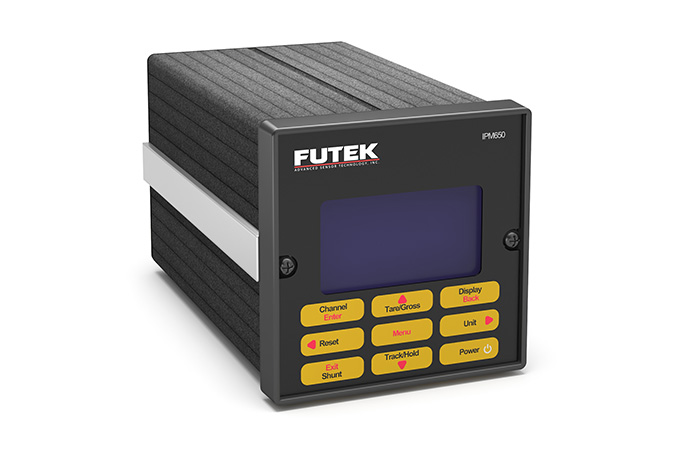|
|
|||
|
|||
|
Description
|
|||
|
The IPM650 Intelligent Panel Mount is FUTEK’s solution that can be easily integrated to work with Load Cells, Torque Sensors and Pressure Sensors. The IPM650 Digital Load Cell Display has an input range of up to +/-500 mV/V. Besides the mV/V input, the device accepts amplified output sensors in range of ± 12 VDC or up to 30 mA. It also has two individual relays and two analog voltage and analog current outputs. This load cell display unit provides an additional 24 VDC / 5 VDC as power supply for sensors with a built-in amplifier. FUTEK’s IPM650 Load Cell Display also supports TEDS which makes it easy to switch between different sensors. A high speed/ low noise/ high resolution (24 bits) ADC is integrated in the device to make it suitable for high-accuracy measurements. This IPM650 Load Cell Panel Meter also has the capability of displaying values onto a computer through a USB link.
Load cell digital displays are necessary where the load or force measurement application requires that the load be displayed locally in the field or laboratory as well as displaying the results on a PC, DAQ or PLC. In those cases, one can use FUTEK IPM650 Digital Load Cell Display. Each load cell readout can be used to connect up to 14 sensors' profiles.
The IPM650 is not just a Digital Load Cell Panel Meter (strain gauge display or weight meter) it goes beyond, indicating the force measurement readings, exciting the load cell bridge circuit and reading its mV/V output signal. The more advanced the digital load cell display is, the more capabilities it has to condition the signal and communicate with peripheral devices, such as a computer, PLC, DAQ, or remote display unit.
What are the basic functions of a load cell signal conditioner?
|
|||
|
Features
|
|||
|
|||






 Excitation Voltage:
Excitation Voltage: 


